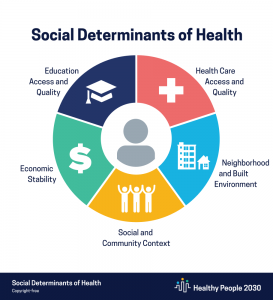A.J. Drexel’s Aut ism Institute has been publishing powerful analyses of big data on the topic of autism for over a decade. Their most recent report, The Intersection of Autism, Health, Poverty and Racial Inequity is another call to action for behavior analysts to meet our calling of engaging in work of social significance. The following two questions were assessed in Drexel’s report: 1) Do income-based differences in health and health care outcomes look the same for children with and without autism? 2) Do income-based differences in health and health care outcomes look the same for BIPOC children with autism and white children with autism? As expected, the findings indicate that poverty and racial/ethnic minorities experience significant disparities. As The Project Director, Dr. Alice Kuo states, “autistic individuals have higher rates of undiagnosed cancers and cardiovascular disease, higher rates of unintentional injuries and decreased life expectancy, compared to non-autistic individuals. Research should focus on exploring factors that contribute to these disparities, and social determinants are likely to be the key.”
ism Institute has been publishing powerful analyses of big data on the topic of autism for over a decade. Their most recent report, The Intersection of Autism, Health, Poverty and Racial Inequity is another call to action for behavior analysts to meet our calling of engaging in work of social significance. The following two questions were assessed in Drexel’s report: 1) Do income-based differences in health and health care outcomes look the same for children with and without autism? 2) Do income-based differences in health and health care outcomes look the same for BIPOC children with autism and white children with autism? As expected, the findings indicate that poverty and racial/ethnic minorities experience significant disparities. As The Project Director, Dr. Alice Kuo states, “autistic individuals have higher rates of undiagnosed cancers and cardiovascular disease, higher rates of unintentional injuries and decreased life expectancy, compared to non-autistic individuals. Research should focus on exploring factors that contribute to these disparities, and social determinants are likely to be the key.”
Social Determinants of Health (SDoH) are conditions in the places where people live, learn, work, and play that affect a wide range of health risks and outcomes. SDoH includes economic stability, education access, and quality, healthcare access and quality, neighborhood and built environment, and social and community context. Addressing disparities such as those found by the report conducted by Drexel involve addressing these upstream factors described as SDoH. Upstream interventions such as a change in social policies (e.g. nutrition programs and social security) can reduce health disparities by reducing the adverse effects of poverty among children. Upstream intervention addresses the question “How do we create a scenario where this negative experience doesn’t happen again?” In this case, how do we decrease inequities so these health disparities for autistic individuals no longer occur? As behavior analysts, we can work to increase upstream intervention (policy change) so the downstream impact (health disparities) no longer occurs. Cihon & Mattiani provided a wonderful discourse on this important work in their Behavior Science Perspectives on Culture and Community with a chapter dedicated to Applying Behavior Science to Large-Scale Social Changes written by Todorov & Lemos. This text is a great place to start learning about the intersection of behavior analysis and upstream intervention.
“Inequality causes problems by creating fissures in societies, leaving those at the bottom feeling marginalized or disenfranchised,” Nicholas Kristof. Our work as behavior analysts truly can decrease the marginalization and disenfranchisement of autistic individuals.
